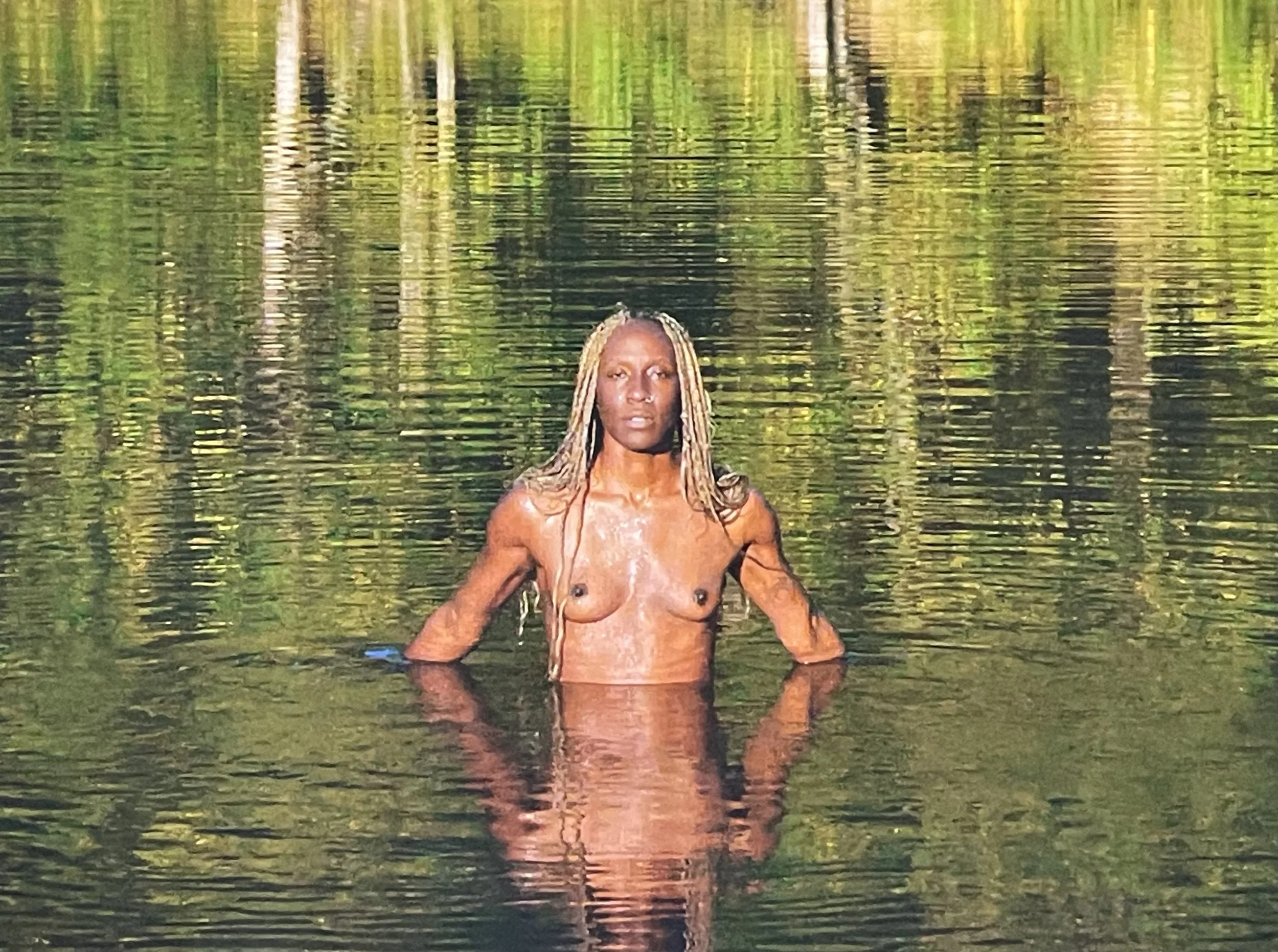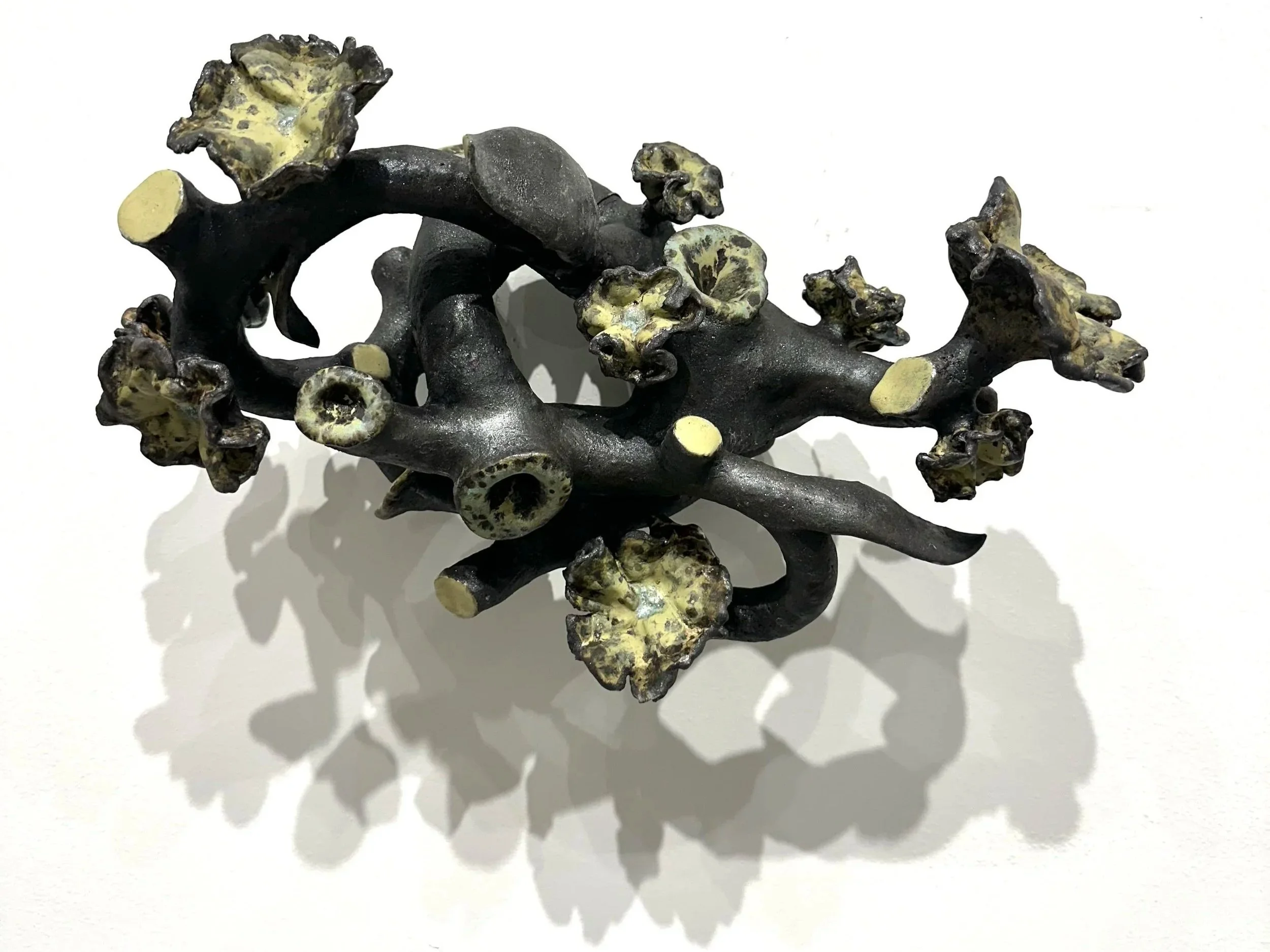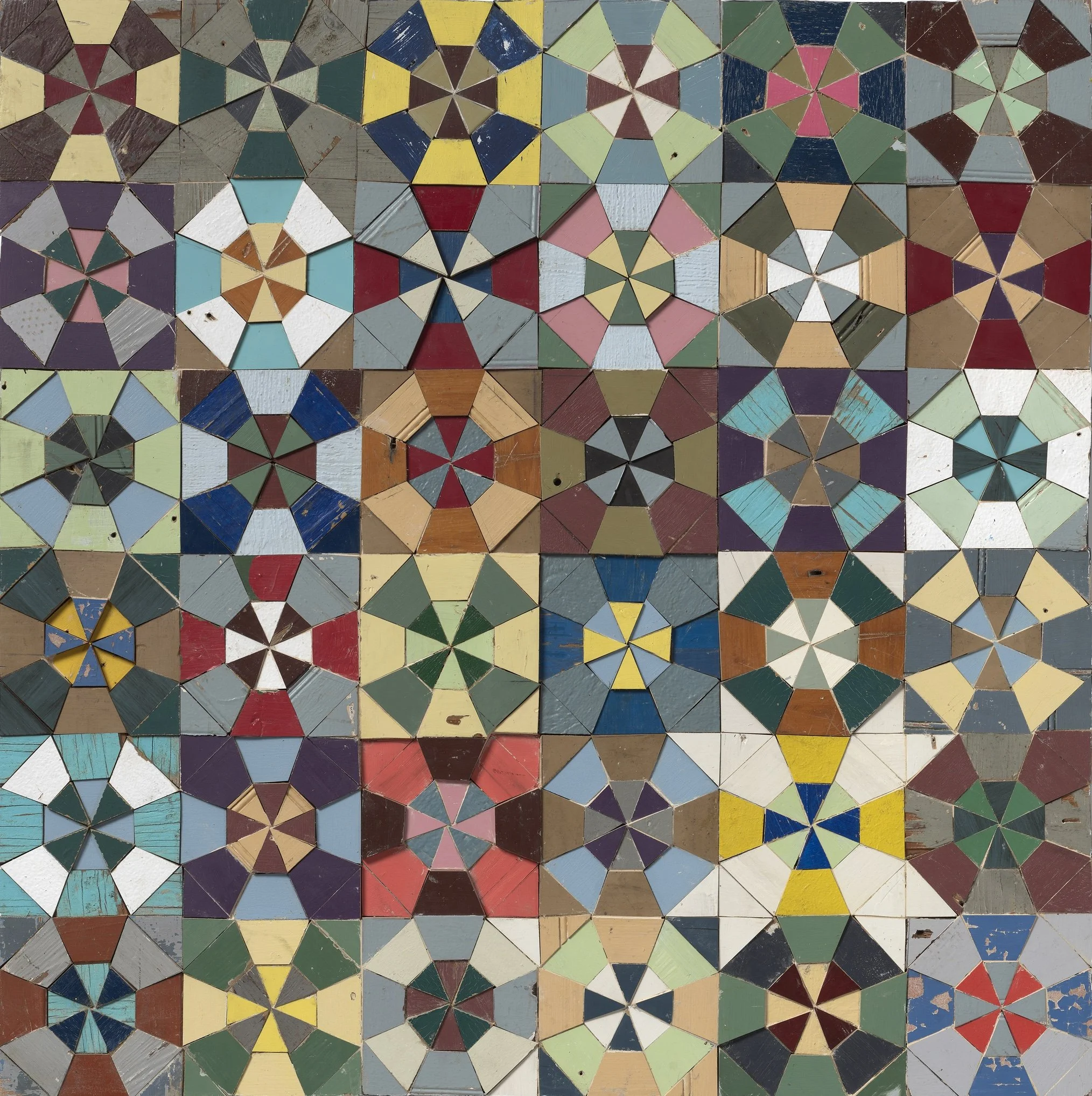YATTA: IRON + PALM WINE, A GLIMMER OF CHANGE, and ASSEMBLE (CUT, BURN, STITCH) WITH CARE.
YATTA: IRON + PALM WINE, at Art Omi, Ghent, NY, through February 1, 2026.
Film still from YATTA, Iron + Palm Wine, video 13:38 min., 2025; director of photography Yeelen Cohen, Jazmin Jones; Photo still David Ebony.
YATTA: Iron + Palm Wine constitutes an extraordinary convergence of poetry, music and scholarly inquiry. A Sierra Leonean-American musician and performer, YATTA explores in this exhibition the music of the late renowned West-African guitarist S.E. Rogie, the artist’s great uncle. In Sierra Leone, Rogie pioneered a genre known as palm wine music, a form of fingerpicking guitar music that was created by merchant sailors in West African cities at the turn of the 20th century. In the front gallery, Rogie’s music and wide-ranging influence are examined in a series of videos shown on monitors placed on plastic lawn chairs with headphones provided to hear interviews and conversations with YATTA and music scholars Jamal Khadar and Cyrus Moussavi. Elsewhere in the main gallery of the exhibition, organized by curatorial assitant Guy Weltchek, wall texts in black block letters feature poetic lines and phrases, with titles such as “Oil Drips and is What We are on Earth,” and a stage-like installation with a two-screen video monitor showing frenetic montages of images of singers, musicians and dancers.
Installation view, YATTA: Iron + Palm Wine, 2025. Art Omi, Ghent, New York. Courtesy of Art Omi. Photo: Olympia Shannon.
In one sense, the front room serves as a mediative prelude to YATTA’s romantic and entrancing approximately 14-minute single-channel video, Iron and Palm Wine, shown in the rear gallery that is the centerpiece of the exhibition. Projected on a large screen, the video shows the artist performing on a makeshift stage placed in the center of a field—resembling one of the verdant meadows of Art Omi—with a single spotlight and a few audience members seated in lawn chairs. The artist performs songs, and poems that touch upon the concept of freedom, as well as Black wandering as “a balm for the psychic wounds” of the transatlantic slave trade, and a number of other poignant and weighty themes, including environmental issues. It is an intimate and gently provocative performance, with one especially beautiful passage showing the artist nude, wading in the idyllic forest lake, as if being embraced by mother Earth herself. —David Ebony
A GLIMMER OF CHANGE: Catherine Howe, Julie Evans, Murray Hochman at 68 Prince Street Gallery, Kingston, NY, through December 21.
Catherine Howe, MineralSpirits No.13, 2025, acrylic, mica pigments, aluminum leaf, glass beads on canvas. Photo courtesy the artist and 68 Prince Street Gallery.
A Glimmer of Change unites three artists—two painters and one sculptor—with distinct visions yet all are kindred spirits exploring novel materials and forms that reference nature and natural phenomenon. Catherine’s Howe’s work, such as the large canvas Mineral Spirits No.13, appears to be a spontaneous gestural composition with allusions to floral, vegetal, or even quasi-anthropomorphic shapes. The swirling lines and organic forms in sumptuous colors seem to writhe in sensuous abandon. This piece, and all of Howe’s works result, however, from an elaborate, labor-intensive process involving countless layers of iridescent, interference pigments, clusters of tiny glass beads, and areas of burnished metal-leaf that cause the surfaces to shift in tone and temperament as one moves before the canvas. Her painting thus engages the viewer in an almost performative way.
Julie Evans, Glimmer, 2025; glazed ceramic, acrylic paint, mica, glitter. Photo courtesy the artist and 68 Prince Street Gallery.
Julie Evans’s ceramic sculptures likewise seem to be living organisms—hybrid plants and animals of her imagination—sometimes rendered in a an almost abstract visual vocabulary. The black wall relief, Glimmer, for example, made of glazed stoneware, highlighted with touches of chartreuse and glitter, appears to be a specimen of some rare or hitherto unknown family of coral, perhaps discovered thriving in an otherworldly sea. Murray Hochman’s Spacescapes, spray-paint on paper works, are densely atmospheric. The silvery surfaces heighted of clouds of pastel hues, seem to emulate the look and feel of a gathering storm. All the works in the exhibition correspond to nature in divergent ways but all are similarly evocative and vital. —David Ebony
ASSEMBLE (CUT, BURN, STITCH) WITH CARE: Laura Petrovich-Cheney, Tristan Fitch, Carolyn Millstein, at Kenise Barnes Fine Art, Kent, CT through December 21, 2025.
Installation view, ASSEMBLE (CUT, BURN, STITCH) WITH CARE: Laura Petrovich-Cheney, Tristan Fitch, Carolyn Millstein; Photo courtesy Kenise Barnes Fine Art, Kent, Conn.
The intersection of craft and fine art is a perpetually fascinating crossroads that many artists and art historians find both challenging and exhilarating to explore. Such is the case with the three artists featured in ASSEMBLE (CUT, BURN, STITCH) WITH CARE. Laura Petrovich-Cheney creates intricate geometric compositions made of recycled, found wood. In most of her works, the bits of wood are assembled in compact, rhymical patterns that often recall mosaics or textiles, and especially quilts, such as those of Gee’s Bend. A representative work by her, Enough Said, has a folk-art feel, as the triangular and trapezoidal shapes recall Pennsylvania Dutch hex signs that would adorn the side of barns and ward off evil spirits.
Laura Petrovich-Cheney, Enough Said, 2024, salvaged wood; Photo courtesy Kenise Barnes Fine Art, Kent, Conn.
Carolyn Millstein’s elegant compositions often unite metal fragments and cloth in ways that also resemble quilts. Her process appears to be related to quilt making although she frequently joins the pieces of found fabric like velvet and silk with strips of metal—particularly copper—that are often burnished to achieve nuances of tone and reflectivity. Tristan Fitch employs the visual vocabulary of Minimalism in his finely crafted wall reliefs called Sodastacks or Smokestacks. His vertical, shelf-like objects allude to Donald Judd’s “stacks” in some way, and hint at modernist sculptures like those of Brancusi. The fired ceramic cubes that he places on the shelves are modular, and viewers can change their configuration as they like. Unlike the ridged precepts of Minimalism, Fitch’s directive is rather convivial and participatory. —David Ebony






